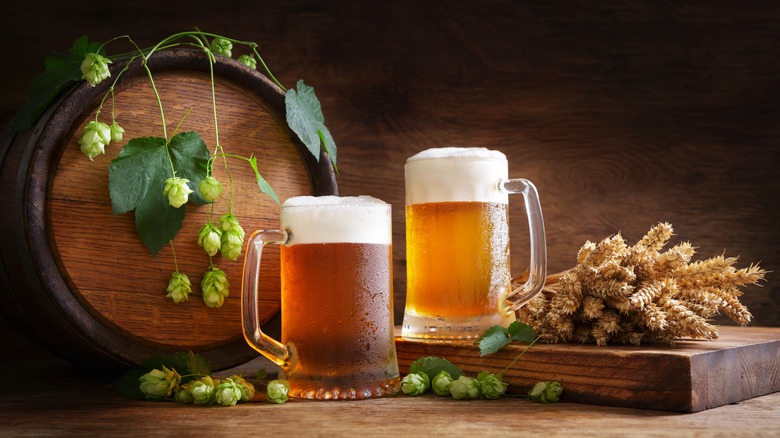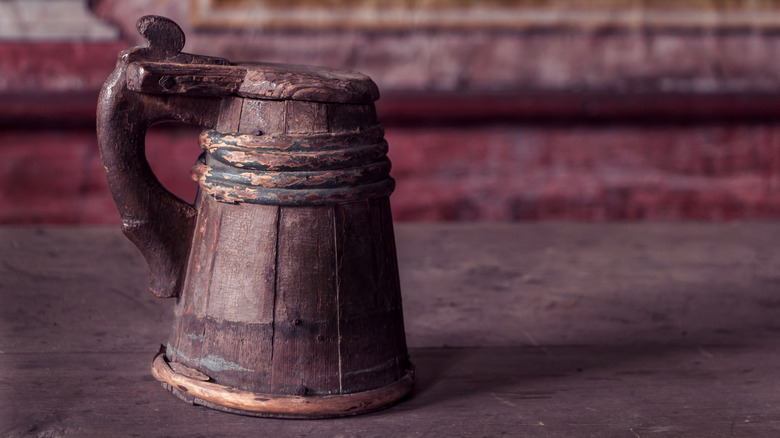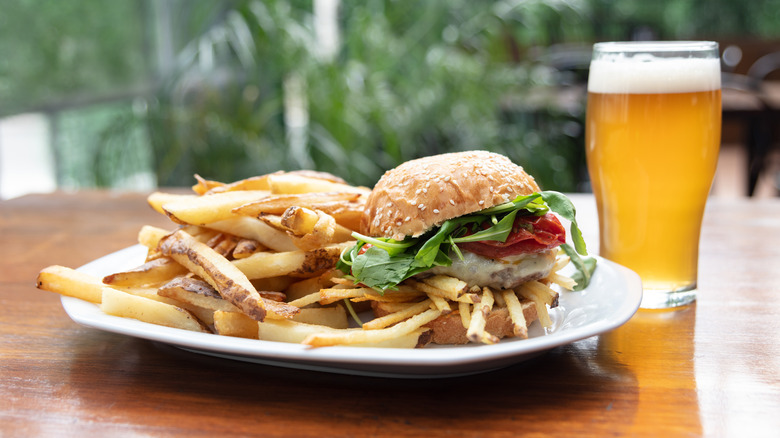Ale Vs Lager: What Makes These Beers Different?
Ales and lagers are two classifications that encompass all types of beer, from light and refreshing pilsners to creamy coffee stouts. The different flavors, textures, and alcohol content are the result of variations in the brewing processes, including yeast strains as well as fermentation temperature and time. While there are many different styles of beer, they are all either an ale, a lager, or a hybrid of the two.
Brewing beer requires varying amounts of grains, water, hops, and yeast — and of course time. When it comes to telling the difference between an ale and a lager, yeast is the key. Ale yeast ferments at warmer temperatures, between 60-70 degrees Fahrenheit. Lager yeast takes longer to ferment in the lower range of 35-50 degrees. These varying degrees also apply to serving temperatures, as some types of beer are best served a bit warmer.
Because lagers require longer fermentation time, undergoing a process known as "lagering," they develop the smooth, refreshing flavor profiles that they are known for. These characteristics are why lagers are served colder (below 45 degrees Fahrenheit) to bring out their lighter and crisper characteristics.
On the other hand, because there are so many strains of ale yeast, the flavors and aromas can vary greatly, but brewing temperature and ingredients ideally produce heavier, more flavorful, aromatic brews. Hybrid beers, as they are known, are a creative brewing blend of the two styles, and various combinations of lager or ale yeast and their respective brewing styles will produce unique variations.
Ancient ales and their newer counterpart, lagers
Ale is the oldest beer style, with evidence of its brewing in ancient civilizations such as Mesopotamia and Babylon, the latter producing some 20 different types and even mandating beer rations for citizens. The ancient Egyptians also brewed ale, leaving it as offerings to the gods and sealing it in tombs for use in the afterlife. These ancient ales were quite different from what we know as beer today, with herbs and spices often added for flavor and unfiltered sediment clouding up the drink. During the Middle Ages, ale was a staple in Europe thanks to the nutritional benefits and ease of production. It was comparable to liquid bread, and would even be served to children at low alcohol concentrations.
Lagers are the younger brew, with many historians tracing them back to 1400s Bavaria. The name for the beer is derived from the word "lagern," which means "to store" in German; a reference to the longer brewing time. More recent archeological evidence suggests there is some South American ancestry in this popular style, thanks to the discovery of some 1000-year-old lager yeast in ceramic vessels near Chile and Argentina.
Today, lagers are the most popular style of beer, but ales are seeing a resurgence thanks to the craft beer revolution bringing fresh, creative energy to the art of brewing. Modern examples of ales include IPAs, pale ales, stouts, and hefeweizens. Lager styles include Pilsner, Bock, and American and Mexican favorites like Coors and Corona.
The best food pairings for beers
So now that you know the difference between lager and ale brewing styles, how can you best enjoy them? As mentioned above, lagers are best served cold, usually right out of the fridge, while ales' richer flavors shine at slightly warmer temperatures; between 45 and 50 degrees Fahrenheit.
While almost any beer can be enjoyed on its own, certain food pairings take them to the next level, enhancing the taste and quintessential characteristics of the brew style. When pairing drinks with food you can either complement or contrast flavors and textures. As such, many lagers are a great meal partner for salads and burgers, complementing the light flavor of leafy greens and helping to cut the richness of a meaty sandwich. They are also great for cooling the palate when eating spicy foods, like Mexican and Asian dishes.
In the ale category, hoppy IPAs tend to go well with steak and barbecue thanks to their earthy flavor, while heavy stouts are best served with desserts that include chocolate and other sweet elements due to their similar taste profiles.
There are no hard and fast rules for pairing, however. It's fun to experiment with recommendations, but you should always try new things and find what suits your palate best!



